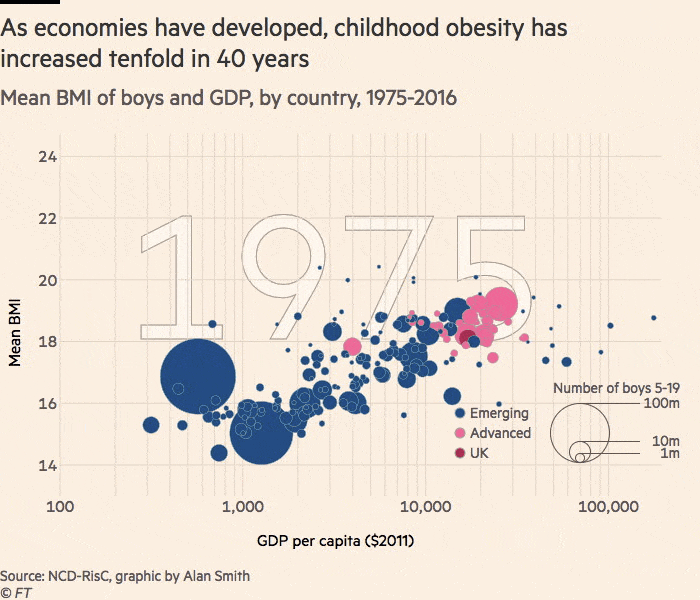Manufacturers respond to health edicts in food and drink recipes

Simply sign up to the Retail & Consumer industry myFT Digest -- delivered directly to your inbox.
Sporting a white baseball cap and white trainers, President Maithripala Sirisena of Sri Lanka marked World Diabetes Day in November by joining a walk in the capital city of Colombo, as he has for the past eight years.
This time, however, the country’s president did something unusual. During a speech, he brandished the distinctive green pack of Milo, a popular chocolate malt drink manufactured by Nestlé and aimed at children, demanding the world’s biggest food company reduce the product’s sugar content.
Mr Sirisena blamed excess sugar consumption as a key cause of diabetes in his country, affecting nearly one in 10 people out of a population of 21m. He accused Nestlé of having increased the sugar content in Milo and demanded the Swiss group reduce it to less than 5 per cent of total content or face legislative controls.
In response, Nestlé said that over the past five years it had cut the amount of added sugar in Milo by 32 per cent and that the drink now contains less than 5 per cent sucrose — equivalent to two teaspoons of sugar.
The public spat marked a new front in a battle that has gradually moved from nutritional experts and health-conscious consumers to politicians, who are increasingly taking legislative action to force companies to go easy on sugar, salt and fat in foods.
The number of obese people has tripled worldwide since 1975, according to the World Health Organization. In a recent report the United Nations-affiliated organisation drew attention to a 10-fold increase in child obesity over the same period.

The WHO supports sugar taxes as one of a series of measures to promote healthy eating and, to date, around 20 countries have introduced a form of sugar tax, including Mexico, France, South Africa and Norway. Sri Lanka will join that group, if its plans to impose excise duty on sugary beverages are enacted.
Behind the step-up of government intervention is a fear that national health budgets will be swamped by the treatment of illnesses — type 2 diabetes, heart disease, and some forms of cancer — associated with high consumption of sugar.
In the UK, where obesity rates have doubled since 1993, the cost of dealing with the condition by the National Health Service is projected almost to double from £5.1bn in 2015 to £9.7bn in 2050.
So far, much of the regulation has centred on restricting advertising of children’s sugary foods or imposing taxes on sugary drinks on the basis that these drinks carry no nutritional value, according to health officials, other than hydration, which can be better achieved by drinking water.
Beverage manufacturers have protested — arguing that sugar taxes do not work in reducing obesity but instead hit the poor and cost jobs. The Coca-Cola Company, the world’s biggest soft drinks manufacturer, for example, said recently: “There are better ways to address obesity and help fix government budgets gaps than taxes that hurt local businesses and everyday consumers.”
Sugar taxes may not be a panacea for obesity but the UK’s soft drinks levy, announced in March 2016, has demonstrated that they can be effective in persuading manufacturers to reduce sugar before the tax kicks in — in April 2018. The levy is expected to add about 8p to a 70p can of cola.
The UK Treasury originally thought the levy would raise £520m a year but, in its most recent Budget forecast last month, it reduced its estimates — the clearest sign yet of the measure’s efficacy as a deterrent.
Manufacturer Lucozade Ribena Suntory has accelerated plans to reduce sugar and use artificial sweeteners in order to escape the tax altogether, as drinks with less than 5g of sugar per litreare exempt from the levy. Peter Harding, chief operating officer, says: “We were already doing a lot of reformulation work. The sugar tax put a commercial imperative in front of us. We were the first to say that we would take 50-60 per cent of sugar out.”
As governments get serious about increased regulation, food manufacturers are trying to pre-empt changes through voluntary measures. They are also driven by rising consumer demands for more nutritious ingredients.
Kellogg’s, the US food group, for example, said last month in the UK that it would cut sugar in its Rice Krispies and Coco-Pops cereals, which are popular with children, and will axe altogether its Ricicles brand which is one-third sugar, from January. But there are limits to the amount of sugar that can be taken out of a product without affecting taste and texture. For this reason, many manufacturers have shrunk portions, which usually results in higher profit margins.
Few have gone as far as Mars, which last year told customers to eat some of its products only “occasionally”. The US food group said: “To maintain the authentic nature of the recipe, some Mars food products are higher in salt, added sugar or fat,” adding: “These products are not intended to be eaten daily.”
Drinks manufacturers are aware that artificial sweeteners are opposed by some consumers and have therefore been working on natural, low-calorie alternatives, particularly stevia, a leafy shrub which is intensely sweet but has a bitter aftertaste.
Coca-Cola, said last month that it would launch Coca-Cola Stevia No Sugar next year. It said it had developed a form of stevia that mimics the taste of sugar without any bitterness with PureCircle, the Bermuda-based company that specialises in stevia production.
Nestlé also has high hopes for next year, when the maker of KitKat launches a range of the chocolate bar with 30 per cent less sugar. It says it has devised a technology to alter the structure of sugar crystals so they dissolve more quickly when consumed — this allows it to use less sugar to deliver the same taste of sweetness.

Comments